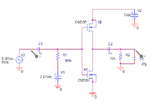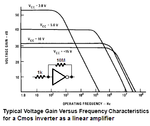esteemera
Newbie level 2

In the attachment, capacitors and high value resistors have been used. What is the purpose? Is it to minimize distortion and maintain the stability in the mid frequency band?
I don't have software's to try simulate and check the result. Any thoughts on the output of the amplifier for different resistor or capacitor values?
Thanks.
